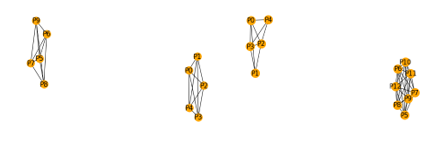Dr. Sisay Chala (Fraunhofer FIT)
- Introduction
Could positions associated with devices help track networks of people who were in close contact with someone infected? This is a concept developed in the frame of the GOEASY project in order to contribute to the fight against epidemics.
There have been a number of discussions about using data from the mobile operators to trace the behavior of users and check how far the social distancing is working. We have to keep track of all tours of a single person (i.e., map tour to a person) to get the required information. In other words, in the case of Corona pandemic, it helps to evaluate how effective the social distancing is working. When considering the legal aspects, GOEASY can have the technical capacity to solve this need.
While on one hand, tracking people helps to verify if the measures proposed by authorities are being respected by citizens, on the other it does not provide the users who might have been affected by the pandemic due to the interactions with infected people. The goal of this work is, therefore, to demonstrate a modeling of a network of users with respect to their proximity with infected people and showcase how it could be applied to tackle the spread of the pandemic, and thereby reduce its negative impact on society and economy.
GOEASY aspires to offer the utilization of location precision using Galileo’s advanced features, location authentication with external receiver and cell tower, signal verification with Galileo’s advanced anti-spoofing features, and various security features to develop a platform with data sovereignty and privacy awareness.
- GOEASY’s Approach
Modeling a network of people in contact with a person with a confirmed case (in a given frame of time and space), makes it possible to track, locate, and isolate potential patients. As depicted in Figure 1 and Figure 2, let p0, t0, p1, t1 … be locations of person 0 at time 0 and person 1 at time 1 and so on, respectively. Everyone in a proximity less than a certain distance from the patient, i.e., less than 2 meters in the case of Corona pandemic, tells that a person was in connection with a suspected patient pn at time tn. Building and visualizing the network of persons who were in close contact will enable to track, locate and isolate potential patients before they spread the infection further.
Once a person pn is tested and confirmed to have been infected at time tn, we can model the network of users in contact with the user within a time frame of tn-i < tn < tn+i, where n is the time the user is tested and confirmed positive and i is the incubation period of the infectious microbe (COVID-19 virus in this case).
- Possible Scenarios
Based on whether the first patient (aka patient zero) is identified (or not), there are ranges of scenarios as to how many networks could be generated (and how complex the problem of tracking, identifying and isolating potential patients will be). Here we depict the two extreme cases, i.e., the best and worst scenarios that may arise when applying the proposed solution in dealing with Corona and similar pandemics. That is, on one end of the spectrum, as shown in Figure 1, identification of patient zero enables us to model one huge graph and minimizes the process of isolation. On the other end, as depicted in Figure 2, failure to identify patient zero, however, will result in multiple graphs with diverse complexities.
One can observe from Figure 1 that when p0 gets tested and is confirmed to have been infected, a single network could enable authorities to track potential patients before they spread the infection.
In the case when p0 was not tested or was not confirmed to have been infected, we may get a number of networks as multiple patients (e.g., p6 and p2 as shown in Figure 2) could show up for testing after they got symptoms. This scenario can also help reduce the spread of the transmission.


